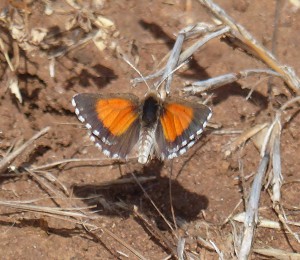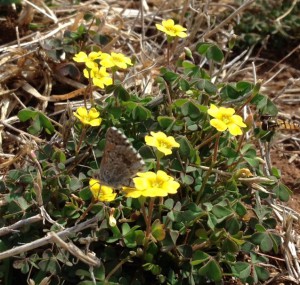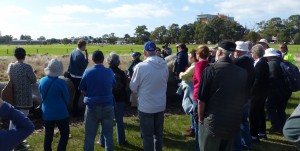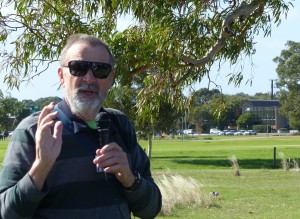A Grassland Tale from the Heart of the City: the Adelaide Parklands and the Chequered Copper Butterfly
It has been a pleasure to be involved in a project being run through the Adelaide City Council recently revolving around – would you believe – ‘a little butterfly’. This creature is called the Chequered (or Grassland) Copper and it belongs in the Lycanidae family (or Blue’s).
Nature Glenelg Trust were asked to undertake a fauna survey of the Victoria Park (central city) site in autumn 2017 with the aim of contributing to the documentation of significance fauna of the site. We set up two transect walks to record the butterfly and other species found, along with active searching for other fauna groups and 20 min bird surveys over the 2 ha site which is nestled only a few hundred metres south of the V8 Supercar track. It’s hard to believe that this area of Parkland has a long history in horse racing up until 2007 and since this time has been used as a recreation area for walkers and joggers while providing a unique chance to see what natural values it contains as a recovering native grassland in the heart of Adelaide.
The family of butterflies (Lycanidae) which the Chequered Copper is part of is an interesting butterfly family because of the important bond (or relationship) their larvae have with ‘ants’. The caterpillars are essentially cared for by ants whereby they tend to the larvae while it feeds, and carry it back into their nest each day to protect it from predation. This behaviour is not unusual in the Lycanidae butterfly family with over 70% of the butterfly species in this group throughout Australia having an ‘ant’ link.
In 2011, the Chequered Copper was observed at Victoria Park and since this time considerable interest and effort has gone into learning more about the flora and fauna, and implementing appropriate management practices to ensure that humans, the butterfly, the ant and the food plant can all co-exist.
A field walk, luncheon and seminar was held on Saturday May 12th, which I attended and it was a well organised event run by the Leaders in Sustainability team. This team are undertaking a project on ‘BiodiverCity’ (or Biodiversity in the City). The day was sunny and warm, providing perfect conditions for a guided field walk. Liam Crook (Biodiversity Officer) can be seen here leading the walk and highlighting the importance of the site to the butterfly and other local threatened flora.
At the luncheon, Mr Mike Moore (Butterfly Conservation SA Inc. President) spoke about the important relationship the Chequered Copper butterfly has with ants in particular the Black Tyrant Ant (Iridomyrmex rufoniger). The caterpillar emits the same pheromones to the attendant ant which helps explain why they are friends and not ‘foe’.
Dr Mike Kokkinn provided an enthusiastic and motivating talk about how local people could help with the butterfly, the ant, the food plant and managing grasslands. He used the analogy of a butterfly and its four wings with each wing representing one of these four components. Mike said, “we should all aim to understand more about or contribute to at least one”.
Mr Andrew Crompton gave the final talk about the original vegetation of the area, and how it was once a grassy woodland and now mostly grassland. Andrew showed various photos including a fabulous painting from the 1840s depicting a very different looking park to today. Andrew also highlighted how we’ve lost the aboriginal land management of the past which may be contributing to the demise of some species in grasslands, and how if this form of land management could return even on a small scale, it could help keep the grassland flora and fauna species flourishing.
Nature Glenelg Trust’s interest in Victoria Park hasn’t stop here. We were asked to expand our fauna survey effort over a further 8 sites throughout the broader Adelaide Parklands in spring 2017 to autumn 2018. This survey has been a mammoth effort of transect walks, 2 ha bird surveys, active searching, ultra violet light trapping, sweep netting, micro-pitfall traps and roofing tile grids. To date, the survey continues to add new species to the expanding list for the Parklands, which will be delivered shortly to the Adelaide City Council.
Keep an eye out for future articles on a few interesting finds during this survey!




